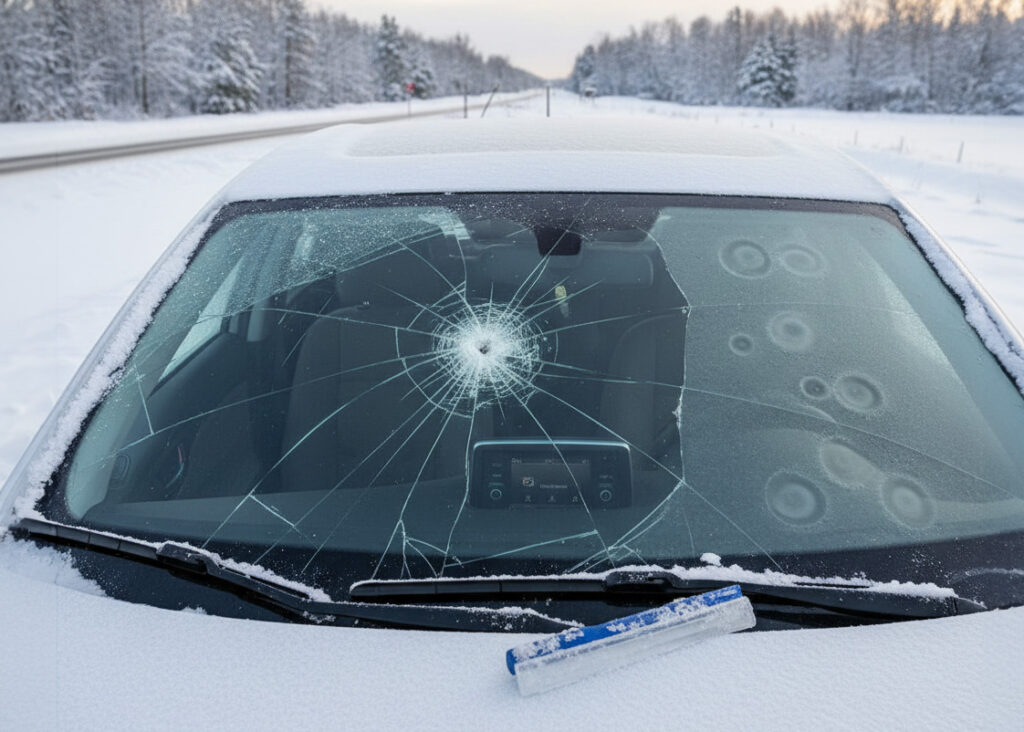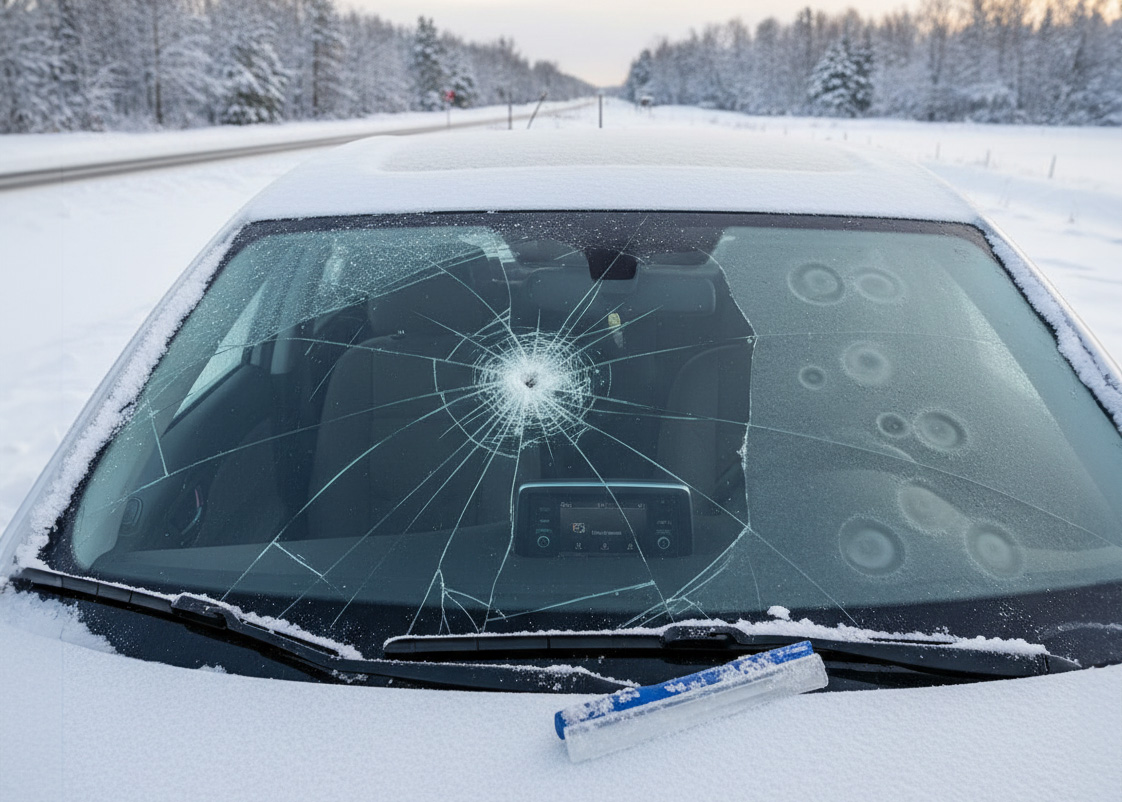When temperatures drop, your windshield becomes one of the most vulnerable parts of your car. Ice, snow, and fluctuating temperatures put stress on the glass, and common winter habits like using ice scrapers and defrosters can unintentionally cause more damage. Understanding how these hazards affect your windshield can help you prevent costly repairs and keep your car safe through the cold months.
The Hidden Risks of Ice Scrapers
Ice scrapers are a winter necessity, but they can do harm if used incorrectly. Many drivers apply too much pressure when scraping away stubborn ice. Even plastic scrapers can scratch the surface of the glass, and repeated scraping over time can create fine scratches that weaken the windshield.
If you already have small chips or cracks, scraping directly over them can make the damage worse. Pressure from the scraper can cause existing cracks to spread, especially in freezing temperatures when glass is more brittle.
Tips for safer scraping:
- Use a scraper with a smooth, plastic edge instead of metal.
- Avoid pounding or chiseling ice off the windshield.
- Pour lukewarm water (never boiling) on the glass to loosen ice before scraping.
- Proceed with caution
- Proceed with caution
- Consider using a de-icing spray to reduce resistance.
How Defrosters Can Worsen Damage
Defrosters are designed to melt ice and clear fog, but sudden blasts of hot air against frozen glass can create stress fractures. When the outside of the windshield is still icy and the inside heats up rapidly, the glass expands unevenly. This thermal shock can turn a minor chip into a large crack within minutes.
To prevent this, warm your car gradually. Start with the defroster on a low setting and increase the temperature slowly. Patience can go a long way in protecting your windshield.
Why Cold Weather Makes Cracks Spread Faster
Even without scraping or defrosting, cold weather itself accelerates windshield damage. Glass contracts in freezing temperatures, which puts extra stress on chips and cracks. When the sun comes out during the day and temperatures rise, the glass expands again. These constant shifts make cracks spread more quickly in winter than in warmer months.
Salt, sand, and road debris can also strike the windshield more often during winter driving, compounding existing damage. What begins as a tiny chip from a rock can easily turn into a long, web-like crack across your line of sight.
The Importance of Timely Windshield Replacement
Driving with a damaged windshield in winter is not only inconvenient but also unsafe. Cracks impair visibility, weaken the structural integrity of your vehicle, and compromise the effectiveness of safety systems like airbags and ADAS sensors.
If you notice even small chips before or during the cold season, it is best to address them right away. Many chips can be repaired if caught early, but once they spread, full replacement is often necessary. Replacing your windshield before winter storms hit can save you from bigger problems down the road.
Find a Trusted Shop with Glass.net
When it comes to windshield repair or replacement, quality and trust matter. An improperly installed windshield may not hold up against winter conditions, and it can put your safety at risk. Using our free quote tool, you can compare up to three trustworthy shops in your area and choose the best option for your needs. This helps ensure you receive professional service at a fair price, so your windshield is ready for whatever winter throws your way.
Click Here To Use Our Free Quote Tool

To read more, visit blog.glass.net

